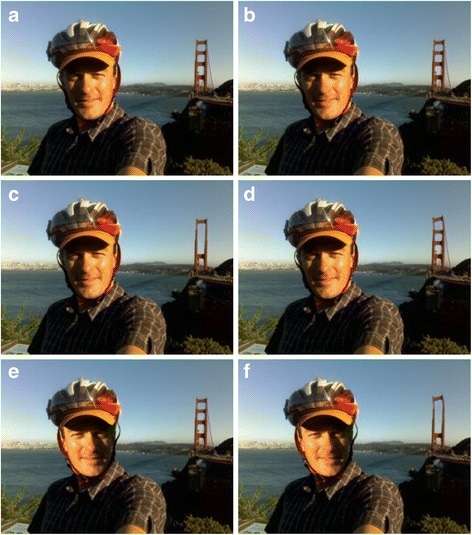A new unique study from the University of Warwick in the United Kingdom looked at a group of participants and asked them to detect digitally manipulated fake images. They found that one third of the fake and altered images went undetected by most participants. The study entitled “Can people identify original and manipulated photos of real-world scenes?” was published in the journal Cognitive Research: Principles and Implications.

Samples of manipulated photos. a Original photo; b airbrushing—removal of sweat on the nose, cheeks, and chin, and removal of wrinkles around the eyes; c addition or subtraction—two links between the columns of the tower of the suspension bridge removed; d geometrical inconsistency—top of the bridge is sheered at an angle inconsistent with the rest of the bridge; e shadow inconsistency—face is flipped around the vertical axis so that the light is on the wrong side of the face compared with lighting in the rest of the scene; f super-additive—combination of all previously described manipulations. Original photo credit: Vin Cox, CC BY-SA 3.0 license. Photos b–f are derivatives of the original and licensed under CC BY-SA 4.0
Because of the low cost, easy-to-use digital tools available these days, it is one of the easiest things to create a fake image digitally out of real world images. Fake images could be used for journalism, mass communication, magazines, social media and even in courts. This study found that participants could identify only 65% of the altered images as fake and only 58% of the unaltered images were detected as such.
The study led by Sophie Nightingale from the Department of Psychology, included 659 people aged between 13 and 70 years. They were provided with a set of images from real world ordinary scenarios. These photos taken by the researchers included scenes such as a woman standing beside a canal or a man on a residential street etc. Some of the images were then modified subtly with minor changes such as clearing of facial imperfections, airbrushing, and whitening of teeth, removal or addition of items from the background. Shadows of the subjects were also altered digitally to appear different from original. These altered and some unaltered images were then presented to the participants and they were asked to identify if these images were fake or original.
Results showed that 58% correctly detected the unaltered images and 35% missed the digitally altered images. Luck factor or identification of the pictures by fluke was 50% and so the results are not very dissimilar if the participants would randomly choose the pictures to be fake or real. After the detection of fake or unaltered, the researchers asked both type of responders to detect where the image could have been modified. In this they noted that 56% individuals detected the correct locations of the alterations. Responders who thought a particular picture was unaltered also could detect subtle changes when they looked for it a bit longer, the study noted. On the flip side some of the participants who had correctly identified a digitally altered image could not pinpoint where the alteration was made. People not being able to detect alteration in the images has been termed as “change blindness” by the researchers.
The study concluded that in general most people have a limited ability to detect a fake or digitally altered scene. Participants of both sexes and over the wide age range (13 to 70 years) all fell prey to falling for an altered image. This raises a question about authenticity and gullibility of the general public to digitally altered images. Airbrushed and photoshopped images of perfect and unreal standards of beauty in magazines have been cause for concern among many regarding their effects on mental health and wellbeing. More stringent monitoring should be in place for images used for journalism and as evidence in courts. These could lead to serious consequences and even miscarriage of justice write researchers. It is a challenge to detect these fake images and research is underway to check if people can make use of subtle signs that indicate a picture has been modified.
Source: https://cognitiveresearchjournal.springeropen.com/articles/10.1186/s41235-017-0067-2